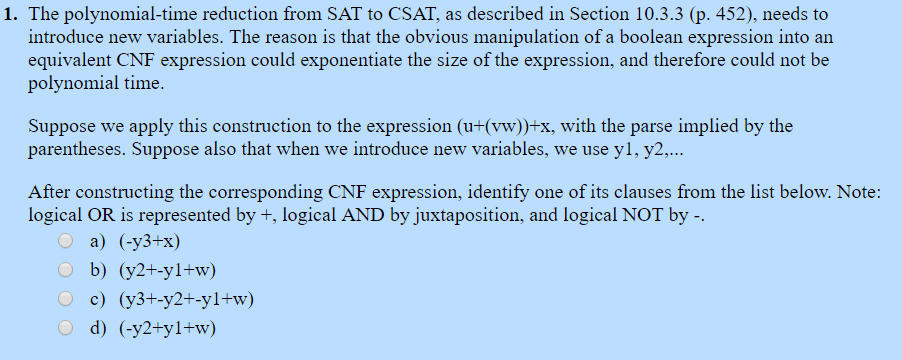Answered step by step
Verified Expert Solution
Question
1 Approved Answer
The polynomial-time reduction from SAT to CSAT, as described in Section 10.3.3 (p. 452), needs to introduce new variables. The reason is that the obvious

Step by Step Solution
There are 3 Steps involved in it
Step: 1

Get Instant Access to Expert-Tailored Solutions
See step-by-step solutions with expert insights and AI powered tools for academic success
Step: 2

Step: 3

Ace Your Homework with AI
Get the answers you need in no time with our AI-driven, step-by-step assistance
Get Started


